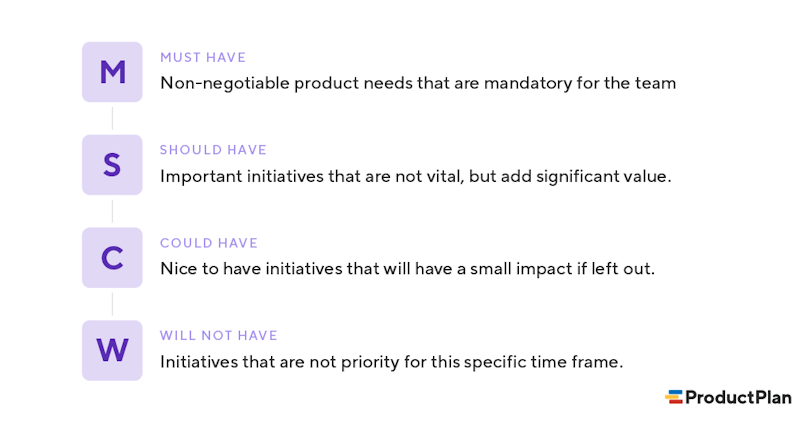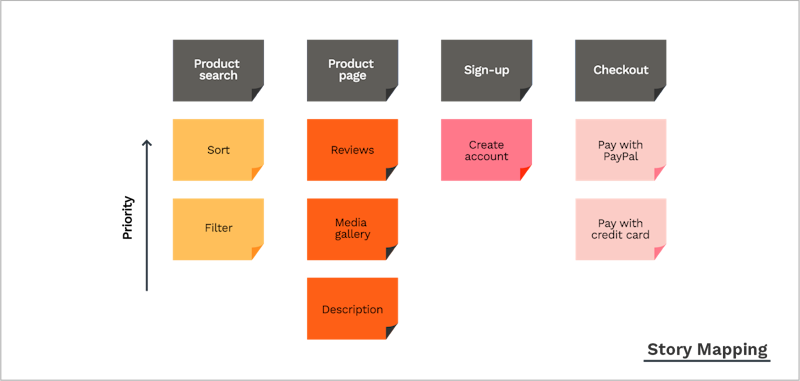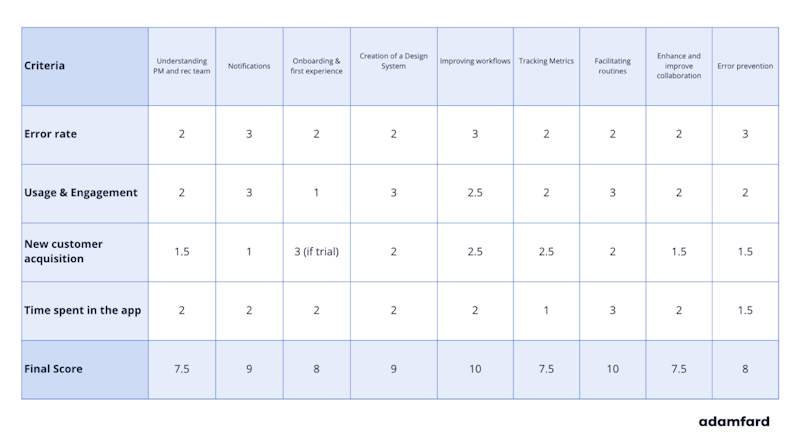Product teams often have to deal with the complicated task of turning down some product features over others.
Discarding them is often more than a mere technicality—a suggested idea, angle, or perspective has a person’s hard work behind it. On the other hand, we can’t afford not to prioritize features since this will immediately turn the whole venture unfeasible.
One way of walking the middle ground is to have a prioritization framework in place. They allow teams to evaluate ideas on a variety of parameters without having to rely on a senior’s gut feeling. Plus, frameworks ensure that all opinions are heard and assessed equally, with no regard to a person’s position in the team or company.
In this article, we’ll take a look at how to do and manage feature prioritization.
Let’s dive right in.
Why prioritizing features matters
The need for prioritization frameworks is defined by a series of factors like consistent decision-making, resource management, and a unified team objective. Let’s take a quick look at all of them.
Decision-making
At any given point in time, there’s an infinite number of actions we can take, both as a company and as an individual. Clear priorities allow us to make sense of it all and decide on the best course of action in a particular context. It’s safe to say that prioritization is an antidote to the chaos that reality is.
Resource management
Resources, whether it’s time, money, or your team’s efforts, are anything but infinite. Therefore, it would only make sense to invest resources into activities that will make the most impact while taking the least effort. Prioritization frameworks are a surefire way to achieve this elusive balance.
Unified objectives
Prioritization depends on…well, your priorities, which are deeply rooted in your goals as a company. That being said, any judgment call regarding features is an excellent exercise to build a sense of agreement and a shared value system across your team.
Prioritization frameworks
Okay, so having a structured approach to ranking features is obviously important. But how does one approach it? Well, as usual, the devil is in the details, since there is a broad spectrum of dimensions to the importance of every feature. The following frameworks will help you identify those dimensions and grade them accordingly.
1. (R)ICE
The product and marketing crowds really love acronyms. And who can blame them? The RICE framework revolves around four central parameters: Reach, Impact, Confidence, and Effort. It allows teams to rank features in a quantified and objective manner. Let’s unpack each of these parameters:
R (reach) accounts for the approximate number of people that a feature will have an impact on. Keeping reach in mind will help you avoid meeting the demands of the most vocal users, who often don’t represent the majority;
I (impact) stems from your goals as a company. What is it that you’re trying to achieve? A better conversion rate? More engagement? Greater profits? Whatever your most pressing goals are, the features you’re building should get you closer to reaching them;
C (confidence) is a way to estimate how sure a team is that a feature will have the desired effect. You seldom have a complete picture. That’s why the RICE framework allows you to also factor in how confident you are that the decision you’re about to make is reliable;
E (effort) is a representation of the time and personpower investment necessary to execute and deliver a feature;

2. The Kano model
This framework was developed by Professor Noriaki Kano back in the 1980s. It revolves around classifying user preferences into five categories:
Basic — a series of features that users typically take for granted. These are the fundamental qualities of a product in a particular category. If these features are appropriately executed, users will remain neutral. Yet, if they’re delivered incorrectly, they will surely be dissatisfied;
Performance — features that make users satisfied when delivered and dissatisfied when not;
Excitement — features that users do no expect by default and make users satisfied when they find out about them. Their absence will not upset a user;
Indifferent — features that have no impact on the users’ satisfaction or dissatisfaction. Generally deemed unworthy of pursuing;
Reverse — the lack of these features might have a positive effect on the users’ experience. Their presence, on the other hand, will undoubtedly make them dissatisfied.

3. The MoSCoW method
The MoSCoW framework is especially useful in attempting to prioritize features under tight deadlines. The core of this method is to consider all features crucial yet classify them based on the size of the benefits that can be delivered in the shortest amount of time. Here are the four categories that the MoSCoW method uses:
Must-have;
Should-have;
Could-have;
Won’t have;

The main problem with this framework is that it doesn’t provide good guidelines as to where you have to place each feature. Of course, there is an array of obvious examples like — users MUST be able to log in, but users SHOULD be able to reset their password.
However, we can also think of many examples that could cause some confusion. For an e-commerce project, you can also say that users MUST be able to browse and SHOULD be able to sort products. However, today, it can be highly counterproductive to create a marketplace that doesn’t have sorting filters.
4. Story mapping
Story maps are a common tool in the UX inventory and can often be used to assign certain elements of a product with a particular priority.
This is relevant for both MVPs and subsequent releases of a product, where you can outline the necessary improvements that have to be made. This prioritization framework is reminiscent of Customer Journey Mapping, albeit with a prioritization layer.

5. Multi-factor matrix
This is a framework that we use when designing complex products. With this method, we create our own prioritization matrix based on individual factors that are essential to our client and the product.
The beauty of this approach revolves around its versatility. All the above-mentioned factors can be grouped in specific categories. For instance:
Business-oriented: ROI, Conversion, Brand Awareness, Revenue;
User-oriented: Usability, Customer Success;
Effort-oriented: How difficult would it be to implement this?;
This provides for a much more flexible framework that can be adapted to larger, more complex projects with more ins and outs than usual.

Here's an example of a customer prioritization matrix from one of our projects
A word of caution
It’s important to underline that while all the frameworks we’ve mentioned above attempt to provide an objective perspective on a project, they all come with a substantial amount of subjective judgments.
This, by no means, undermines their usefulness, but we should perceive them as valuable tools, not indisputable truths.
Prioritization tips
We’d also like to provide you with a few quick recommendations that will assist you with incorporating prioritization frameworks into your workflow:
Get on the same page regarding your goals — a unified vision will allow a team to align on a projects’ values and objectives;
Involve as many perspectives as you can — despite the need for a unified system of values, we also need to be open-minded when it comes to hearing opinions;
Data is your friend — minimize the impact subjectivity has on your judgment by taking a deep dive into analytics and stats;
Bottom line
Fortunately, there are plenty of frameworks you and your team can explore to make sure that the right features are developed at the right time. More importantly, none of the methods above will lock you into a particular approach. Feel free to experiment with them and stick with whichever framework has proven itself the most useful.
FAQ
How do you prioritize features in UX design?
Prioritizing features essentially entails comparing features within your selected framework and working on those that score the most points.
What is feature prioritization?
Feature prioritization is deciding which features you build first.





